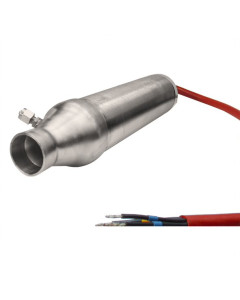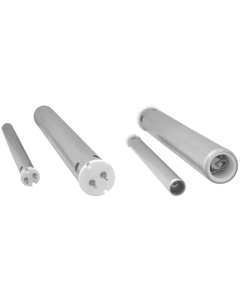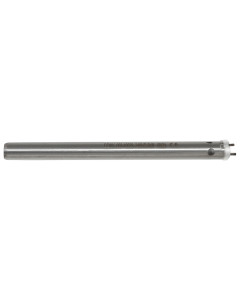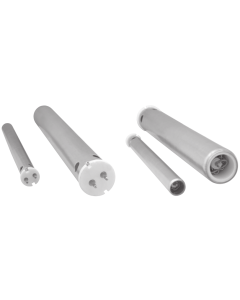Calculate the SCFM.
Three Element Housing
Part #
Features:
- Triple Pass Stainless Steel Housing
- Replaceable Elements
- Choice of Wattage
- Can Be Wired Single or Three-Phase
- Built-In Thermocouple Port
- Flow Rates Up To 50 SCFM
The triple pass housing causes the air to be preheated prior to flowing through the elements resulting in a more efficient heater. The outer shell remains cool to the
touch, making this product user friendly.
The elements can be replaced by removing the Rear Adaptor (2 screws), sliding the electrical leads off the Element Terminal Pins, removing the Element
Retaining Screw, and sliding the three elements out of the housing. New elements are then installed by reversing the above sequence.
There are three different wattage elements that fit this housing:
- Part # (3) 2,000 Watts/Element 240V 6,000 Watts Total
- Part # (3) 2,800 Watts/Element 240V 8,400 Watts Total
- Part # (3) 3,600 Watts/Element 240V 10,800 Watts Total
The element connections are brought out of the housing through a six conductor (Plus Ground) flexible cable. Each conductor is numbered and color coded so that they can easily be connected single or three-phase externally. The silicone jacketed cable is rated at 500 volts and 180°C.
The housing comes complete with a thermocouple port (3/16” Dia. compression fitting) and a plug if a thermocouple is not used. When using a thermocouple be sure to insert it to a depth that will center the junction over one of the elements. Use thermocouple (“K” type with 2 Ft. armor)
Refer to , and for power control of these heaters.


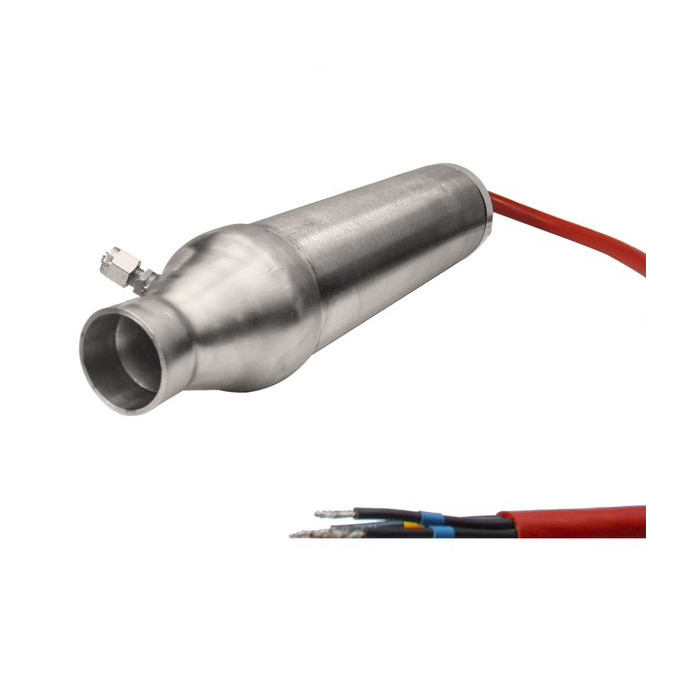

Air flow rates up to 50 SCFM can be used with this housing, however, a regenerative blower should not be used as the back pressure is too high. The compressed air used should be filtered and regulated. Refer to the included performance curves for each wattage.
Part #
(3 ea.) - 2KW Elements
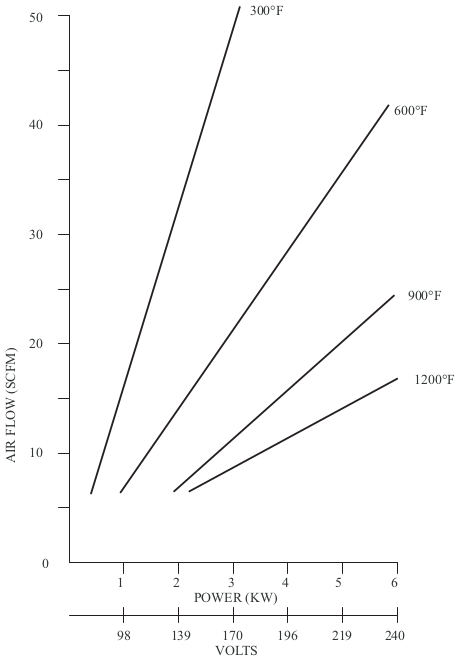

Part #
(3 ea.) - 2.8KW Elements
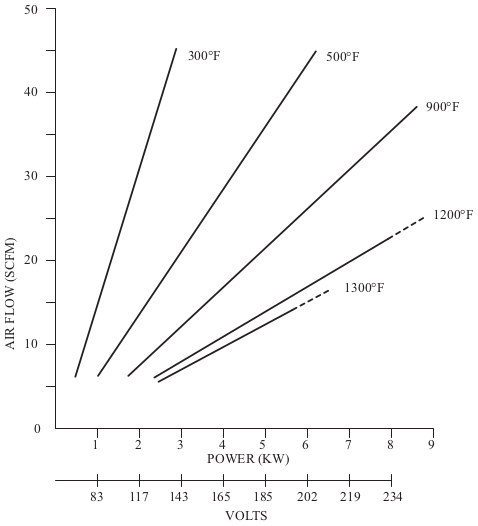

Part #
(3 ea.) - 3.6KW Elements
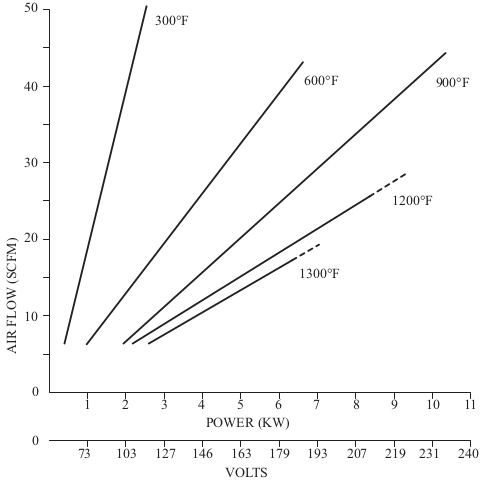

NOTE:
Broken line sections of curves indicate Reduced Heater Life Area. The filament temperature is above 1950°F. Refer to the Heater Life Curve in the technical information section (T) of our website.

